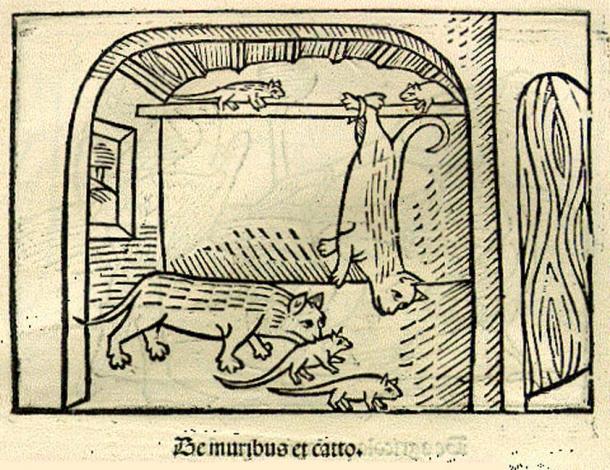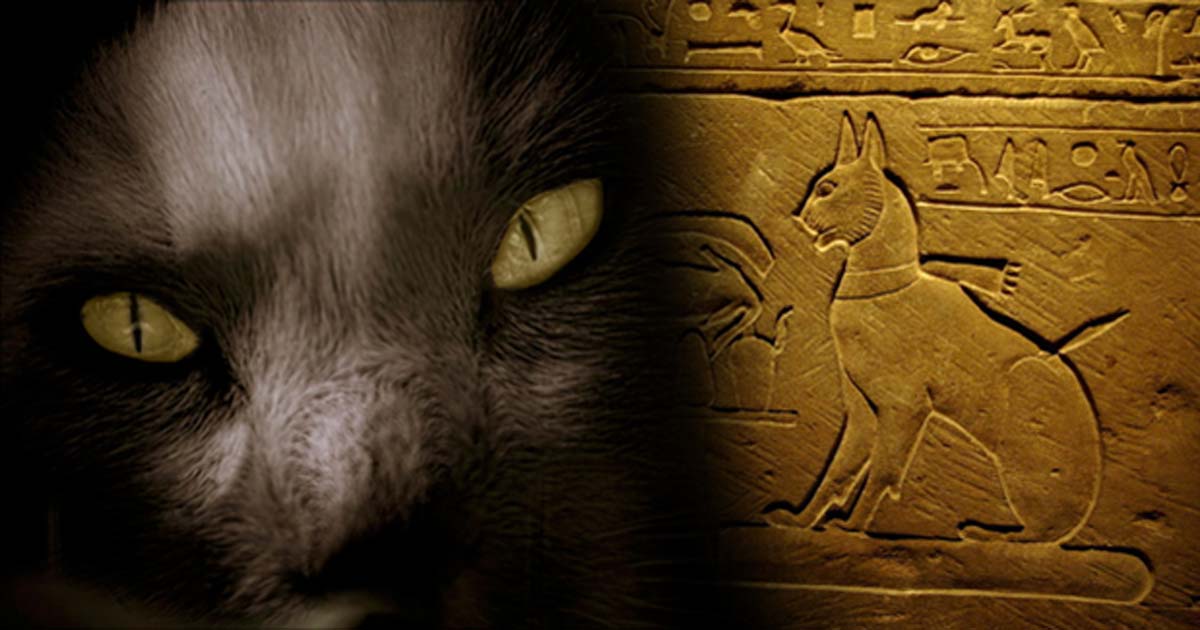The Cat Came Back: A More Than Magical History – Part II
Cats have been on the human scene for 9,000 years. We came out of the caves, and they were there with us. Ever since, cats have been immortalized in art. They have been painted in fresco, sculpted in stone, carved in wood, cast in silver, and plated in gold and warped in words.
One might ask, why do cats have such grand cultural coverage? After all, we’re talking about a small, unobtrusive animal with four legs and a slender tail.
The Dark Side
With all of these reverential, cultural thoughts about cats, one must also acknowledge the dark side of their mythology. As creatures of duality —from the very first wink of human cat-fascination— there has been this not-so-cute, noir-side of cats.
Saint Patrick, as we know, banned the cat from Ireland but he was not the first to do this. During the Inquisition cats were anything but popular. They were burned along with their familiars, witches. The poor animal and the hapless witch went the way of fire.

"The Love Potion" by Evelyn De Morgan: a witch with a black cat familiar at her feet. (Public Domain)
So what did cat fanciers do during the next three hundred years? They re-created the cat, using their overactive imagination.

Eighteenth century folk art, Cat of Kazan (Public Domain)
Thus make-believe felines have many names—Kabouterje, Colfy, and Goblin being just a few. These are were-animals, changelings that have a sort of human and feline identity. In certain nordic myths, Goblin was a clever little man, who could also change into a cat. Arguably, not a cat at all but rather an ugly little person who lived in barns, water wells, gardens, and caves. Yes, and even attics or lofts—the little humanoid troll cat took residence.

The bakeneko ("changed cat") is a type of Japanese yōkai, or supernatural creature. (Public Domain)
Historically, the goblin still lives in literature and has oh-so-many names. The Dutch call the wily creature Kabouterje. The French, Gobelin. The Germans, Kobald. The Russians, Colfy. The Welsh, Coblyn. The English, Goblin.
The Cat Came Back
In time, the red fires of the Inquisition cooled and the cat came back, as the old folksong says; The real cat, that is. It was now time for Goblin, the stand-in, to leave. And who should usher him out? None other than his feline counterpart, Cat.
- The Veneration and Worship of Felines in Ancient Egypt
- Elaborate Native American burial of a bobcat in a funeral mound reserved for humans
- Hair-Raising Tales of Paranormal Animals that Possess Humans, See Death, and Act as Messengers of the Gods
In the Scandinavian countries, the cat of choice that guarded the house and chased away goblins was the Buttercat, known as smierragatto. He watched over bread, butter, milk and cheese. Its favorite place to sleep was by the stove. In Finland, the buttercat lived in the rafters and brought good luck to all who showed respect. In return this utilitarian cat did household chores.

An illustration of "The Cat and the Mice" from a 1501 German edition of Aesop's Fables. (Public Domain)
Keep in mind, this was a real flesh and blood feline, but it was imbued with the magical trappings of myth. When erecting a new house, the Finnish builder always made sure to bring along a shovel of ashes—a gift for the buttercat. As everyone knows, cats like to leave their remains in ashes.
While the concept of the good kitchen cat grew and spread throughout Europe, Goblin, once a good-natured guy, turned short-tempered. There were thus many tales of the good buttercat versus the bad goblin.
Nine Lives
In France the buttercat was known as matagot. This was the magical cat of the Midi that brought good luck to all who fed him. On the peninsula of Brittany in the northwest of France, this providential feline wasn’t called buttercat but rather moneycat. Nine-lived, this cat served nine owners at one time.

Cat resting on a pillow next to an imam in Cairo. (Public Domain)
The significance of good luck and the number nine is not incidental. The earliest mention refers to Muhammad and his cat Muezzin. One day while Muezzin slept on Muhammad’s sleeve, the prophet rose to leave, and rather than wake Muezza, he cut off his sleeve. After this he stroked Muezza three times down the length of his back. This myth explains why cats always land on their feet when they fall—the result of Muhammad’s original blessing. Mythologists also say that the story implies that three times three is nine—thus, nine lives. Muhammad’s severed sleeve became the gift of longevity to all cats.
The long-lived, sacred cat is yet another universal myth. The Japanese temple cat, sometimes called the kimono cat, has a dark spot—this is the obi, or tie of the kimono. Long ago such cats were brought to monasteries and deposited there for sake-keeping. The kindly tradition continues in Japan, regardless of cat colors or features.
- The Veneration and Worship of Felines in Ancient Egypt
- Elaborate Native American burial of a bobcat in a funeral mound reserved for humans
- Hair-Raising Tales of Paranormal Animals that Possess Humans, See Death, and Act as Messengers of the Gods
In terms of breed, the prototypical kimono cat was the Japanese bobtail. When the cat’s colors were black, red and white, the cat was good luck-- mi-ke, meaning three color. In Japanese painting, sculpture and luck charms, the mi-ke cat (a tortoiseshell) sits straight with paw upraised in a generous gesture of goodwill.

Blue eyed Female Japanese Bobtail. (CC BY-SA 3.0)
In mythology and in life, all things come to a close, but perhaps not to a finish. So as we close here, we might take a last look at that most restful image—the sleeping cat. Like the earth, the feline’s graceful lines flow from the tip of its nose to the tip of its tail. In sumi, Japanese wet brush paintings, the curled cat is a single line representing the circular sea, the round moon, the entire universe, in repose.

The sleeping cat (CC BY-NC-SA 2.0)
Gerald & Loretta Hausman have authored many books about animals in mythology including The Metaphysical Cat.
--
Top Image: Deriv; Sarcophagus of Prince Thutmose's cat, Ta-miu (CC BY 2.0) and Beware the Cat (Flickr/CC BY 2.0).




















Comments
Check out M. Oldfield Howey's The Cat In Magic for further information on cats, rats, and the Plague.
A good Noah cat story is in our book The Metaphysical Cat, Irie Books, 2011
Thank you for your interest.
Well researched article on the mythology of cats. What is your opinion on the theory that the killing of cats during the plague years because of their connection to witchs, contributed to the spread of the disease as it allowed the rats that carried the fleas to multiply unchecked?
Also, I think an article on the connection between Noah and cats would make a great article. When I googled it, I found only 1 reference. Are there more?